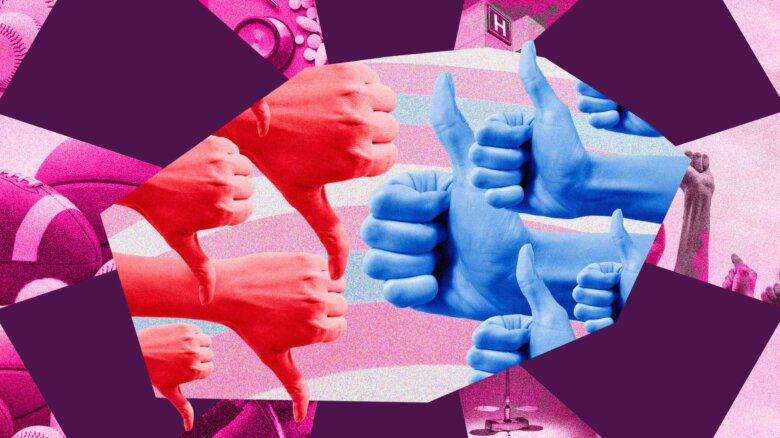Intimate partner violence (IPV) is not limited to heterosexual relationships, yet there remains a dearth of research when it comes to the experiences of LGBTQ2S+ people who experience abuse. A new collaborative study released by RESOLVE, a tri-Prairie research centre, is trying to address this knowledge gap by examining the nature and experiences of IPV in LGBTQ2S+ communities in Manitoba, Alberta and Saskatchewan. The study was done through interviews with both survivors of IPV and service providers across all three provinces.
The study was created in response to a call by the PrairieAction Foundation for community-based research projects looking into intimate partner violence in LGBTQ2S+ communities. It was done in collaboration with the Rainbow Resource Centre (RRC), a non-profit organization that serves the LGBTQ2S+ community in Manitoba. RRC coordinator Joseph Moore said that RRC “were asked to join this partnership because of our scope of working with LGBTQ2S+ communities across Manitoba.”
How does IPV manifest in LGBTQ2S+ communities?
One of the main findings of the research was that LGBTQ2S+ people experience similar types of physical, emotional and/or sexual violence to heterosexuals, but can also experience unique forms of violence as a result of their sexuality or gender identity. Participants reported being ridiculed for their body or appearance, being threatened to be outed if they left the relationship, and refusal [by partners] to use their correct name or pronouns. “In a sense, that violence was compounded for LGBTQ2S+ survivors in a way that [it] isn’t for heterosexual survivors,” says Ashley Haller, the project coordinator.
The study also took an intersectional approach, which Haller says “highlighted how different individuals in LGBTQ2S+ communities [with] different gender identities, sexual orientations, socio-cultural backgrounds and abilities really experienced violence differently.” For example, disabled participants were more likely to experience physical injury, especially those with multiple disabilities, where the rate of physical injury was 25 percent higher than non-disabled participants. With the exception of suicide attempts, women (cis and trans) and non-binary people were more affected by emotional injuries than men, such as depression and anxiety attacks, feelings hurt or disappointment and lowered self-esteem. Trans and non-binary participants reported disproportionately high rates of suicide attempts compared to their cis counterparts. Racialized individuals were the most likely to report being outed or threatened to be outed, and Indigenous people were significantly more likely to report damage to possessions or property as a form of emotional abuse.
In addition to compounded violence based on their sexuality and gender identity, there were also many barriers for LGBTQ2S+ survivors when seeking help, especially from formal services such as law enforcement and shelters. Many traditional shelters are designed primarily for heterosexual women, so LGBTQ2S individuals face discrimination and harassment when trying to access these services. There was a strong aversion to seeking help through the police, given their historic role in the criminalization and repression of LGBTQ2S+ people. Those who did report IPV to the police often reported experiencing discrimination, or even abuse. One hundred percent of racialized individuals interviewed were “dissatisfied with the reporting process.”
A significant number of participants chose not to report incidents of IPV, mainly because they didn’t want anyone to know what happened, or didn’t believe anything would be done about it. For those who did report, the majority chose to speak to a counsellor, psychologist or support worker. In the absence of accessible formal support services, many participants turned to informal support from family, friends and/or coworkers. Dr. Kendra Nixon, professor of social work at the University of Manitoba and the principal investigator for this study, emphasizes the importance of these informal supports but adds that many people might not know what to do if a friend or loved one is experiencing IPV. “I think definitely more awareness and education needs to be provided to those groups so that when they do receive a disclosure from a family, friend, relative [or] coworker, they know how to respond,” she says.
The broader context of IPV in LGBTQ2S+ communities
“We found that of all the studies that have been done on intimate partner violence, less than three or four percent are actually on the experiences of LGBTQ2S+ communities,” explains Nixon when asked about the reason for this research. She adds that she’s not aware of any study that focuses on the prairies in depth.
Previous studies have looked at the prevalence of intimate partner violence in LGBTQ2S+ communities, but many focus solely on gay and lesbian experiences, or were conducted in the U.S. A 2018 study by Statistics Canada found that two-thirds of sexual minority women had experienced intimate partner violence in their lifetime, a significantly higher rate than heterosexual women. A 2010 study from the CDC found 44 percent of lesbians, 61 percent of bisexual women, 26 percent of gay men and 37 percent of bisexual men have experienced intimate partner violence in their lifetimes. The 2015 U.S. Transgender Survey, the largest survey of trans experiences, found that 54 percent of trans and non-binary respondents had experienced intimate partner violence in their lifetimes. A 2020 report by the Human Rights Campaign Foundation argued that the COVID-19 pandemic would “exacerbate both the incidence and the magnitude of intimate partner violence, especially in the LGBTQ+ community.” The majority of these studies show that not only are LGBTQ2S+ people at greater risk of intimate partner violence, but they also face barriers when seeking support due to discrimination or lack of affirming care.
Dr Janice Ristock, one of the co-investigators of this study, has been researching violence in queer and trans communities since 1990, and published the book No More Secrets: Violence in Lesbian Relationships in 2002. She says that it’s disheartening to see that many of the same barriers present in the first study she did over 20 years ago continue to exist today. She describes some of these barriers as “experiencing stigma/shame on account of their gender identity or sexual orientation; fears of discrimination; and a lack of services specifically designed for LGBTQ2S+ communities.”
“You would think that things would have moved forward in terms of service provision, and even people’s perception of violence,” said Nixon. “It’s unfortunate that we haven’t seen a whole lot of change in the last 20-plus years.”
Turning research into action
RESOLVE strives to create research that is action-based. The study made numerous recommendations to improve the response to IPV in LGBTQ2S+ communities. Many participants recommended that safe and inclusive spaces practising anti-discriminatory and affirmative care be established, and identified a need for more queer service providers and queer-run spaces where IPV survivors can seek help. Participants also expressed the need to expand existing services to make them more accessible and to be able to address barriers facing community members with multiple marginalized identities. They noted the importance of increased education on IPV within LGBTQ2S+ communities, in addition to general education on healthy relationships, consent and abuse. Additionally, they recommended improving police responses to IPV, as well as providing alternate avenues to seek help outside of placing legal charges. As many services supporting survivors of IPV are currently underfunded, they also advocate for increased funding to help these organizations better serve queer and trans people. The researchers hope that these recommendations will also help to prevent the normalization of IPV with LGBTQ2S+ communities.
One area in which Nixon particularly hopes to see change is shelters. “I think a lot of shelters would say that they are open to LGBTQ2S+ communities, and including those who identify as trans, yet don’t really understand that being open is different than providing services, having programs specific for certain populations and understanding their unique realities,” she says.
Moore says that RRC is already working on this. “This is part of our ongoing work to build capacity in community services to properly support LGBTQ2S+ participants.” They emphasize the importance of equipping community services to better support LGBTQ2S+ people in addition to building informal support networks within the community so that survivors know where to reach out for help.
Finally, the researchers hope that this study can inspire further research and action surrounding IPV in LGBTQ2S+ communities. “We’re not just building or developing knowledge,” says Nixon. “We’re hoping we take that knowledge and move it forward so that it actually leads to actual or tangible policy and practice change.”
If you are looking for support related to intimate partner violence, contact The Network/ La Red at 617-742-4911 or toll-free at 800-832-1901 in the United States. Contact The Crisis Text Line (Text HOME to 741741) in Canada, U.S., U.K. and Ireland. Help specific to Canadian provinces and territories may also be available.


 Why you can trust Xtra
Why you can trust Xtra


